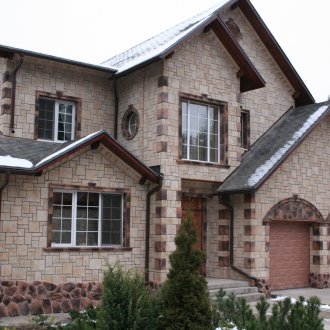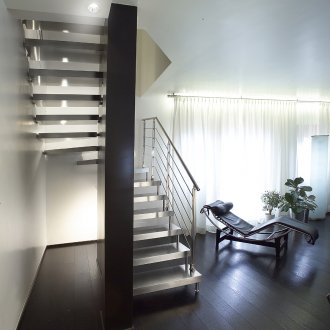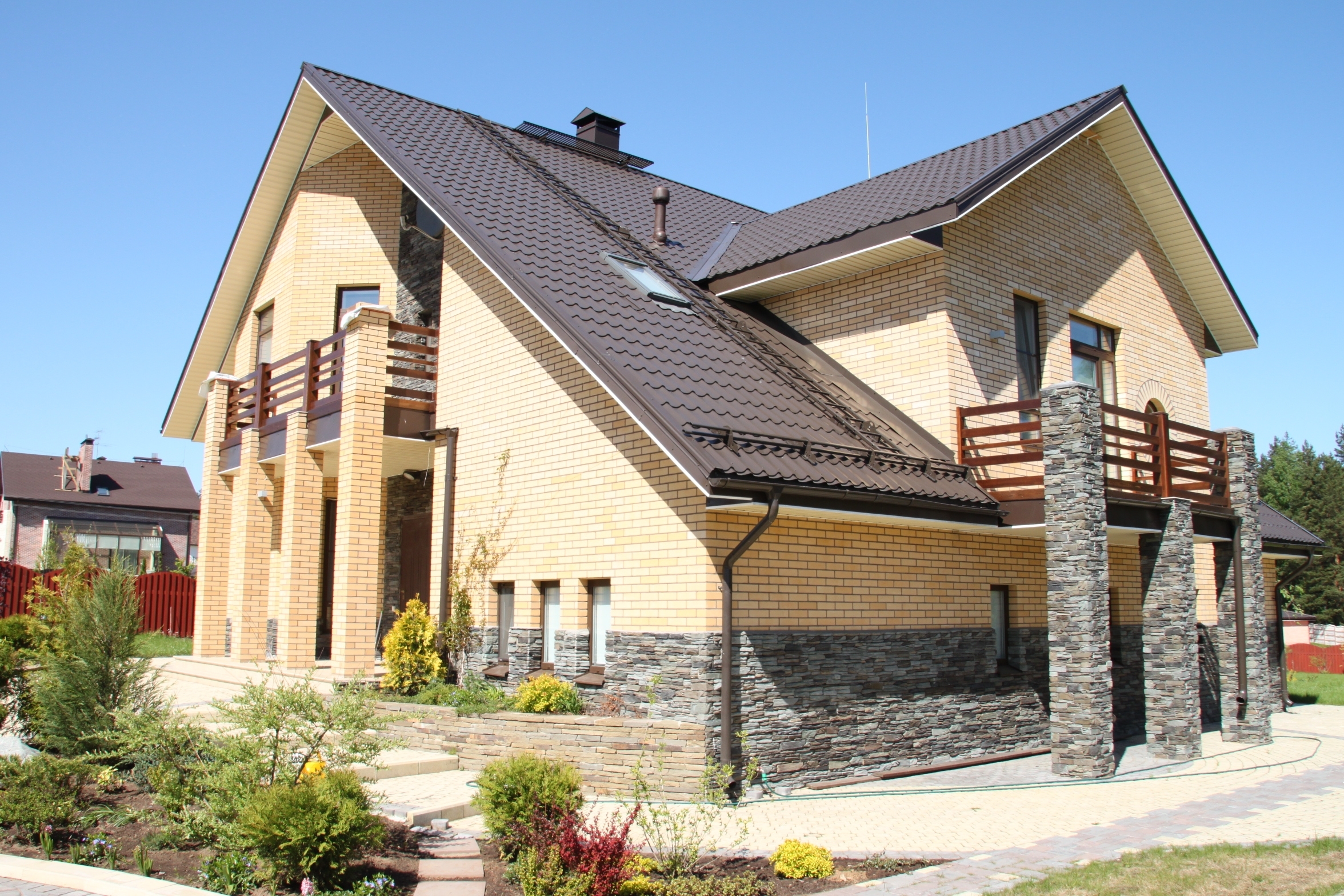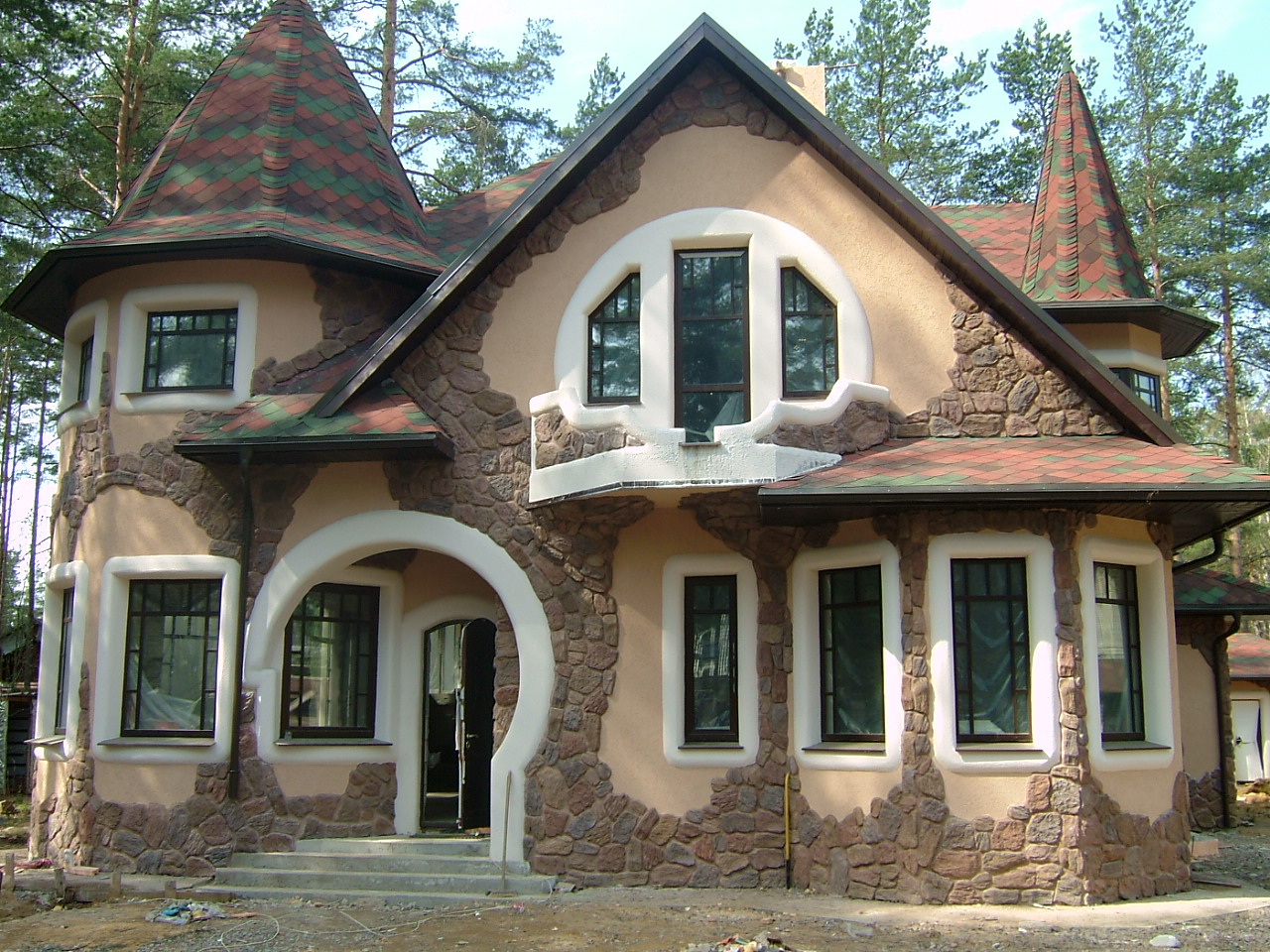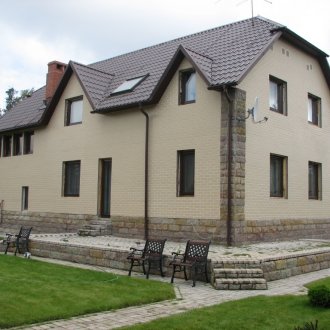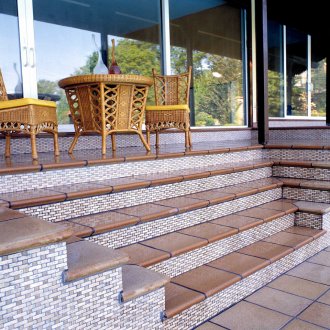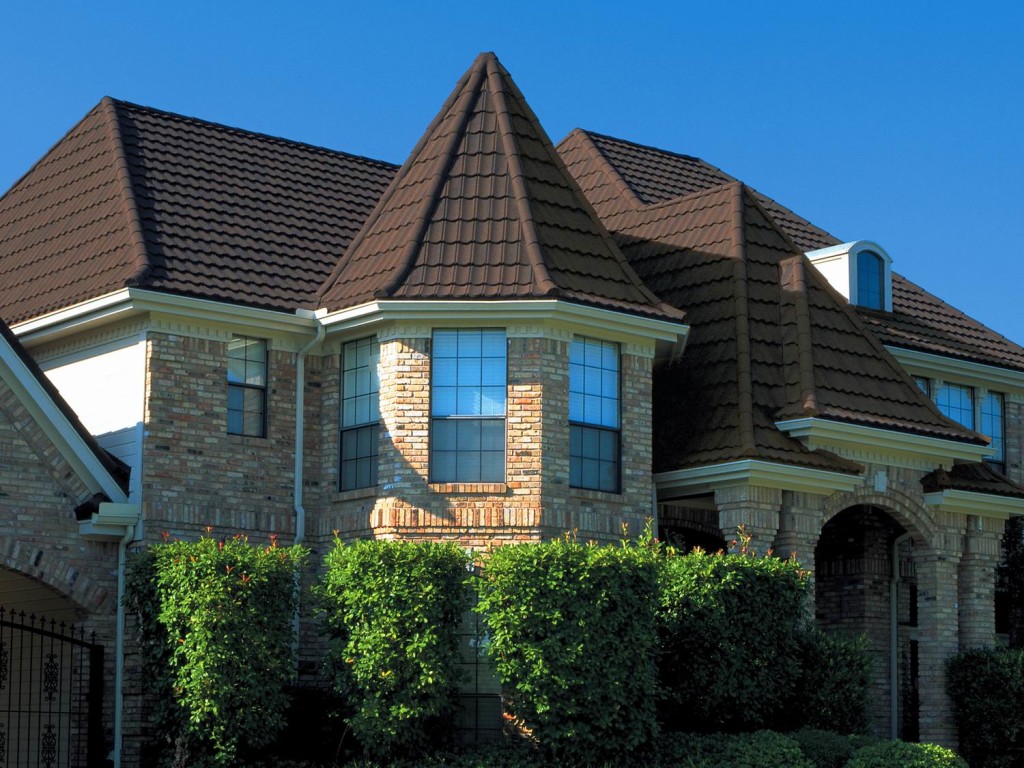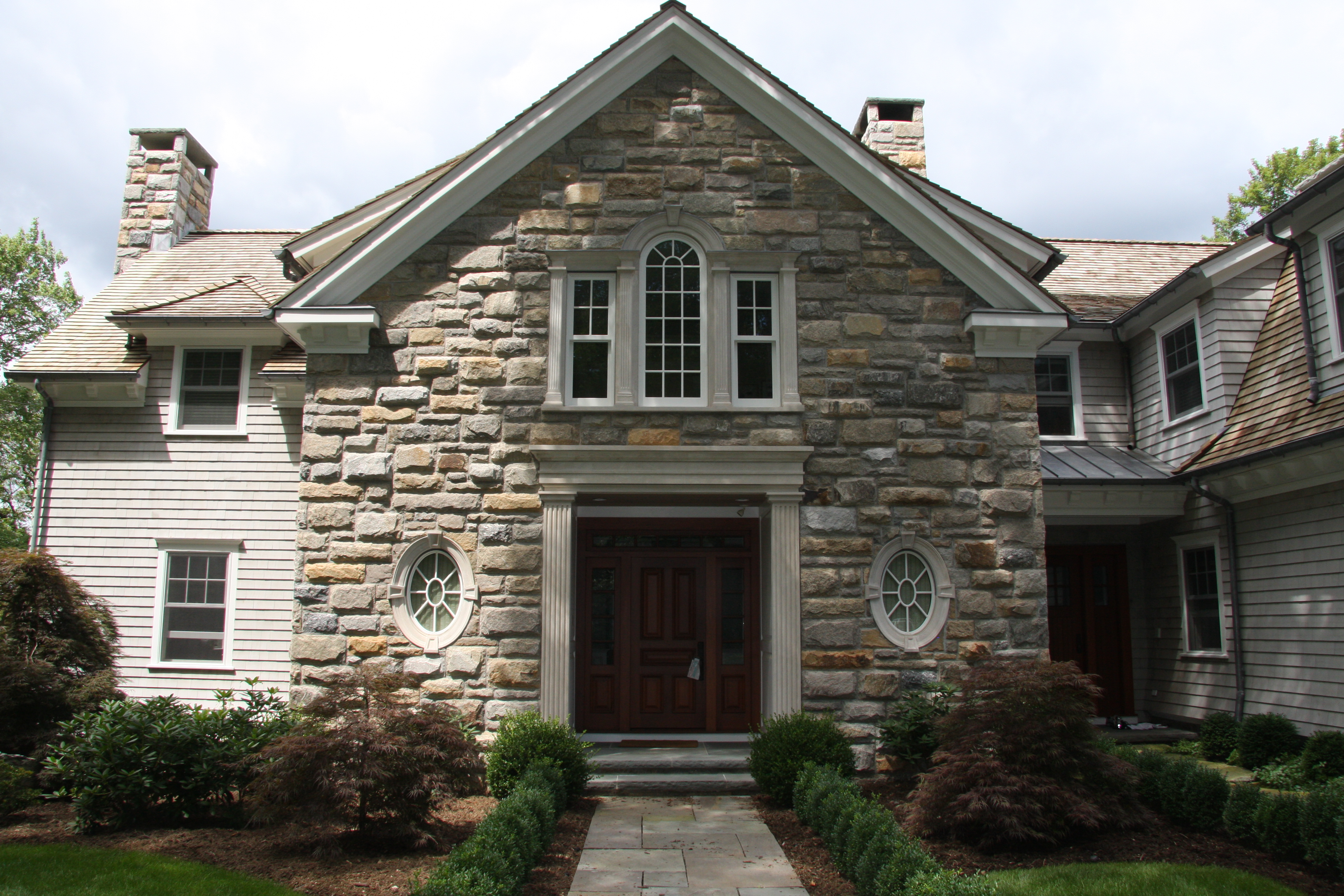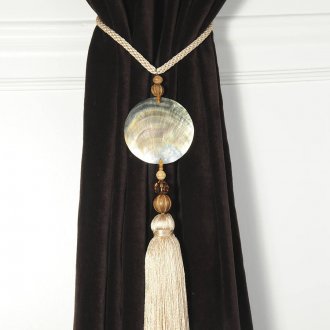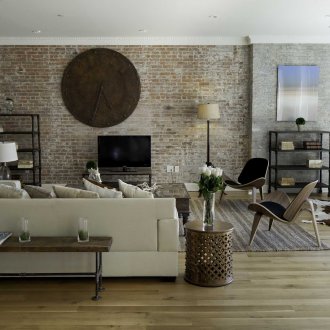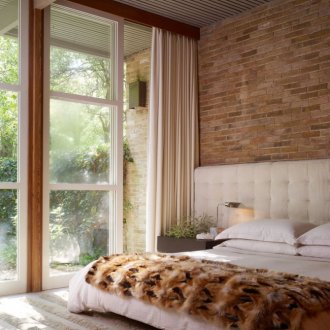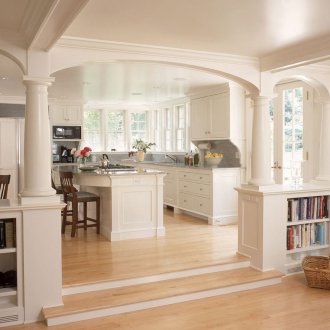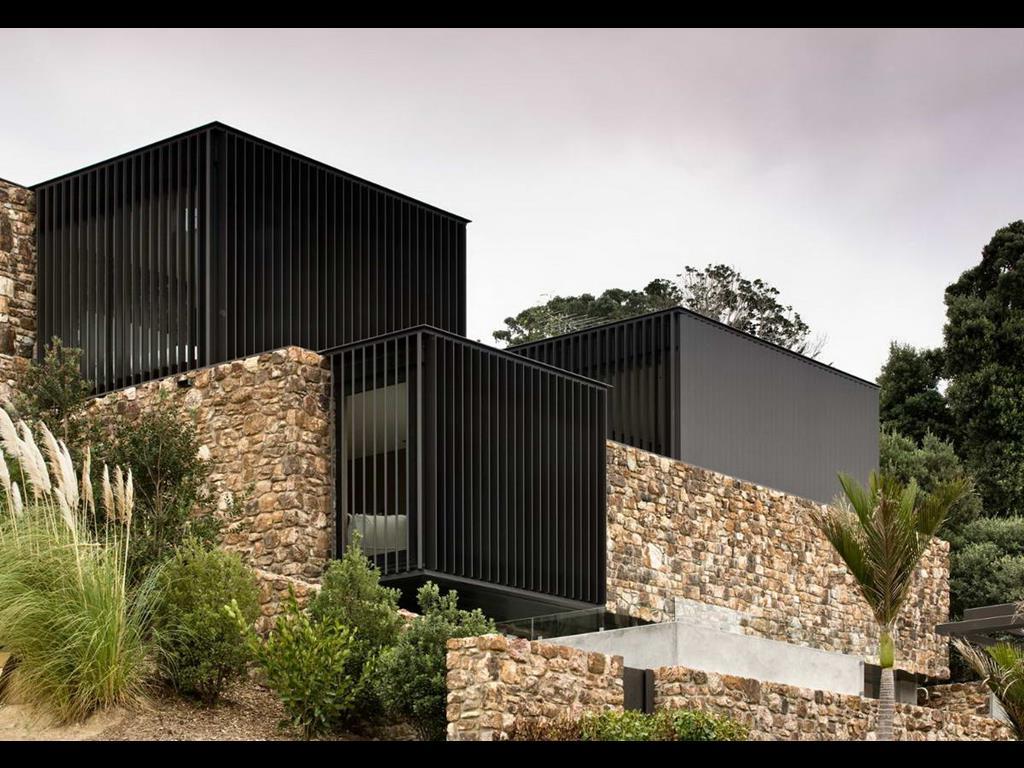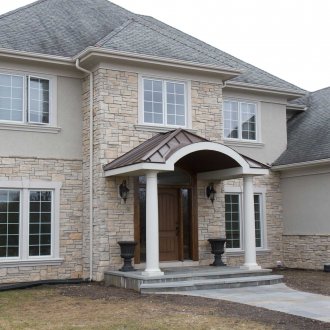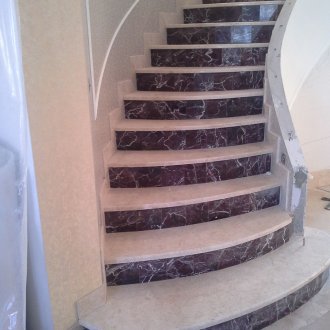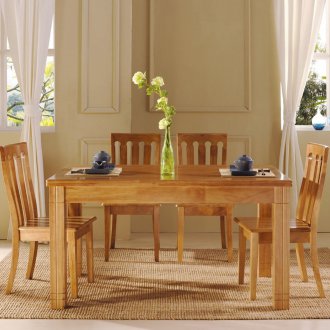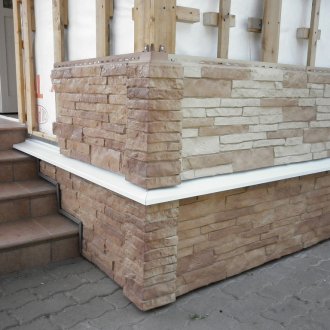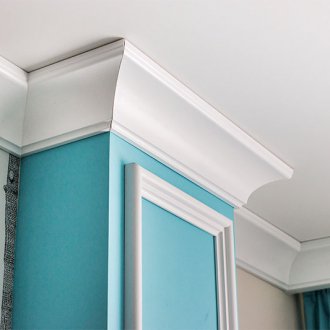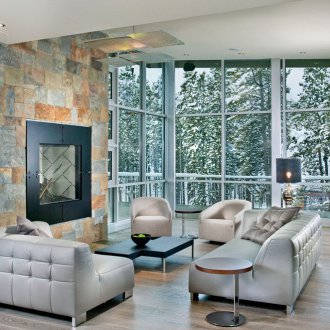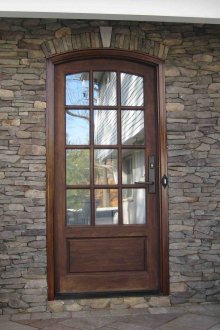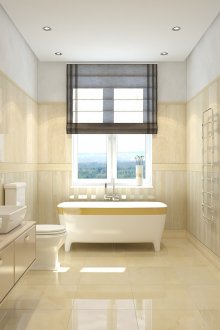Front panels: stone or imitation (22 photos)
Content
The facade of the house is his face, and every owner wants it to be beautiful, but aesthetics are not the only requirement, the cladding material must be reliable.
Cladding options
Traditionally, it is brick, rubble stone or other similar materials, but not everyone can afford them. New technologies have expanded the list of formulations suitable for performing such functions. Cheaper at times, but almost indistinguishable in appearance and performance, an artificial analogue, for example, the popular burnt stone. A plastic facade tile that successfully imitates even the most noble breeds is even more affordable. There is plenty to choose from.
Natural stone
A real stone house often remains a pipe dream. Facade panels made of natural stone are also not cheap, but they have so many advantages that many allow themselves such luxury.
As a building material, natural stone has pros and cons. Advantages:
- Environmentally friendly, since it is mined in a natural way, subsequently without “improving” anything.
- Durable, with almost eternal life.
- Resistant to moisture, temperature extremes, sun, fire.
- Aesthetically attractive, therefore, does not need additional processing.
- Exclusive: two identical natural specimens do not exist.
Cons: high price, the need for professional styling.
From this category, rubble and wild stone, granite, and marble are the most popular. The first two are used in private housing construction, the rest are in demand for public buildings.
Rubble stone
The rock is irregular in shape. It is this arbitrariness that creates a highlight, an exclusive design. The size of the largest fragment can reach half a meter.
Wild stone
To decorate the walls, varieties such as sandstone and boulder are used. Sandstone has a wide range: from gray to red (up to brown). Gray-blue specimens come across. Quartzite makes it quite durable. It has medium hardness, low porosity and moisture absorption.
Along with the walls, it is rational to tile the basement made of concrete blocks or reinforced concrete. Such tiles should be flat at least from the back.
Facing is carried out in several stages:
- The walls are plastered.
- Tiles are laid out the way they will be installed on the surface: this will allow you to perform work better and faster.
- A solution or glue is applied to the back of the fragment. The tile must be applied to the surface, pressing as tight and tight as possible.
- For the plinth, they begin laying from the lower and upper rows, so that the edge is perfectly smooth, and then fill the remaining space. On the walls - on top, so the flowing glue does not stain the lower rows.
- Seams are filled with cement to avoid voids. To give the most aesthetic appearance, the seams are slightly deepened.
When working, especially with the basement segment, larger elements are placed on the lower rows. For facing, stones up to 2 cm thick are taken, and the strongest fragments are laid at the corners.
Plastic
The level of modern technology is such that not everyone can distinguish exterior panels under a stone made of plastic from natural natural stone immediately.Plastic imitates any breed so successfully that even a large stone on the panels is very similar to natural. There are a few more advantages:
- Durability. Hard vinyl panels last up to 30 years, even in harsh climates.
- Light weight. No effort is required when laying and accounting for the strength of the bearing walls.
- Resistance to moisture, temperature extremes, fungus.
- Simple installation. If you have at least basic skills, you can do everything yourself.
- Affordable price. Compared with natural stone panels, it is cheaper at times.
- Plastic panels are classified as single or multi-layer.
The first are cheaper, but insulation is needed. In multilayer polyurethane is laid, performing the role of heat, hydro and sound insulation. They can be mounted at any time of the year. Plastic withstands even freezing.
The plastic panel can easily be used as a basement. This is the most practical, convenient, aesthetic, profitable way to protect the foundation of the house.
It starts with the primer of the walls so that the fungus does not start. Next, a crate is made on which the siding will be held. It is better to take a profile of metal. If a wooden beam is selected, it is additionally impregnated. Next, the panels are mounted. Start with corners and joints.
The start panel must be installed at the very bottom and further finishing should be done from it. The panel does not press tightly, a small gap is required. The final fragment is fixed under the roof.
Fake diamond
One of the most popular in this segment, although it is really artificial material. However, it has many advantages in operation, it is several times cheaper than natural, easier to work. Outwardly, it is difficult to distinguish a man-made sample and, for example, a real rubble stone. In terms of properties and price, this is the golden mean between natural material and plastic.
This material consists of cement, quartz sand, expanded clay, pieces of natural stone, which give strength.
Facade panels are made of artificial stone by the method of vibration casting: the form is filled with a solution, and vibration separates the heavy and light fractions. The pigment is introduced into the mixture immediately or during manufacture. Accordingly, the fragment is painted completely or only on top, but in both cases beautiful decorative specimens are obtained that are durable, durable, resistant to natural disasters.
There are several types that differ in characteristics, scope, method of production. White stone looks especially elegant and solemn. It is used in the design of walls, but not heavily polluted base.
Porcelain Tiles
It is made of coloring pigments, clay, mineral additives, feldspar. The composition is pressed on a vibrating machine under pressure, fired. Such hardening gives resistance to loads, temperature extremes. It turns out a durable, wear-resistant composition resembling ceramics. It can be destroyed only in contact with hydrofluoric acid.
However, its processing is problematic, restoration is impossible. It has low sound insulation, high thermal conductivity, but a varied palette, gloss or dullness, surface relief resembling a natural rubble stone.
Agglomerates
Marble, limestone and other stones ground and bonded with polyester resin make them durable, frost-resistant. They successfully mimic exquisite breeds. However, abrasion, poorly resist the "chemistry". When buying, pay attention to the filler. For example, quartzite gives strength comparable to porcelain stoneware.
Quartz stone
They can independently clad the facade. It is better in mechanical properties and resistance than natural stone. Heat-resistant, in hardness in fourth place. It is easily processed, it is possible to cut with diamond disks, however polishing at home is excluded.
Burnt stone can be with terracotta or raspberry shades, patterns, interspersed, tattered, that is, soft outlines.
Mounting
A solid, even base, plastered or concrete, does not require preparation. In other cases, insulation, reinforcement, plastering are necessary. The finishing process is simpler than required, for example, with natural stone. There are two ways:
- Wet. The panels are attached to the primed wall with construction glue. You can work at a temperature of +5 to + 25 ° C, otherwise it will not dry. In the heat, the walls and material are moistened before applying the solution. The tile is well pressed so that there is no air left between the base and the adhesive. The seams are overwritten.
- Hinged facade. The material is not attached to the wall, but to the suspension frame, which are galvanized or stainless metal profiles. As a result, an air gap forms between the wall and the material. It can be partially filled with thermal insulation.
There are a lot of opportunities to clad a facade so that it resembles a stone. If funds allow, it is better to choose a natural material, for example, wild or rubble stone, but artificial analogues are no worse in properties. The house will be solid in appearance and well protected in any case.
